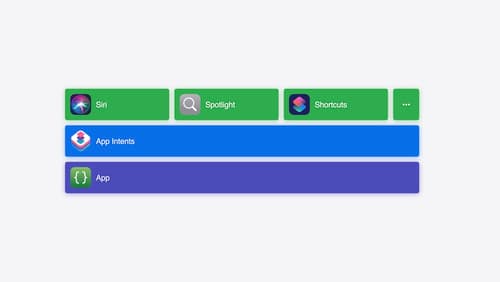tell me about closures
Asked on 2024-08-12
1 search
Closures in Swift are a powerful feature that allows you to capture and store references to variables and functions. They are often used for callbacks, event handling, and asynchronous programming. Here are some key points about closures from the WWDC sessions:
-
Memory Management and Reference Cycles:
- Closures capture references strongly by default, which can lead to reference cycles. This is when two or more objects hold strong references to each other, preventing them from being deallocated. To avoid this, you can use weak or unowned captures. For example, in the session "Analyze heap memory," a reference cycle was resolved by changing a closure to capture a reference weakly, thus breaking the cycle (Analyze heap memory).
-
Closure Contexts:
- When Swift closures capture values, they allocate memory on the heap to store these captures, known as closure contexts. Each closure context corresponds to a live closure, and the memory graph debugger can help identify these allocations (Analyze heap memory).
-
Escaping vs Non-Escaping Closures:
- Non-escaping closures are used within the duration of a function call, allowing their context to be stack-allocated. Escaping closures, on the other hand, must be heap-allocated because they can outlive the function call (Explore Swift performance).
-
Debugging with Closures:
- In debugging scenarios, closures can be tricky because they may be called at different times and from different code paths. Using breakpoints inside closures can help pause execution and inspect the program state (Run, Break, Inspect: Explore effective debugging in LLDB).
These insights from WWDC sessions highlight the importance of understanding closures in Swift, especially in terms of memory management and debugging.

What’s new in Quick Look for visionOS
Explore how Quick Look in visionOS can elevate file preview and editing experiences in your app. We’ll cover the integration of in-app and windowed Quick Look, as well as a brand-new API that customizes the windowed Quick Look experience in your app. We’ll also share the latest enhancements to viewing 3D models within Quick Look.

Run, Break, Inspect: Explore effective debugging in LLDB
Learn how to use LLDB to explore and debug codebases. We’ll show you how to make the most of crashlogs and backtraces, and how to supercharge breakpoints with actions and complex stop conditions. We’ll also explore how the “p” command and the latest features in Swift 6 can enhance your debugging experience.

Bring your app’s core features to users with App Intents
Learn the principles of the App Intents framework, like intents, entities, and queries, and how you can harness them to expose your app’s most important functionality right where people need it most. Find out how to build deep integration between your app and the many system features built on top of App Intents, including Siri, controls and widgets, Apple Pencil, Shortcuts, the Action button, and more. Get tips on how to build your App Intents integrations efficiently to create the best experiences in every surface while still sharing code and core functionality.
